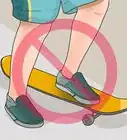wikiHow is a “wiki,” similar to Wikipedia, which means that many of our articles are co-written by multiple authors. To create this article, 17 people, some anonymous, worked to edit and improve it over time.
This article has been viewed 34,480 times.
Learn more...
Choosing a snowboard is a daunting proposition today. Different shapes, board types, profiles, weight classes, and models fill the walls of even the tiniest snow shops, and shopping online can be impossible if you don't know what you are looking for. However, the wide variety of models means that you can always find a snowboard in your price range with a little inside knowledge.
Steps
Choosing The Right Size Board
-
1Choose a board size. Snowboards are usually measured from tip to tip in centimeters. Place the tip on the ground and stand the board up to your face -- the top of the board should reach your chin.[1] However, there are a lot of benefits to buying shorter or longer boards. In general, shorter boards are more maneuverable and longer boards are more stable and can go faster.
- Beginners should choose a board on the longer end -- one that reaches their nose when stood up, for example.
- Heavier riders should consider slightly longer boards to distribute their weight.
-
2Make sure the board is made for your weight. On the back of every board is a weight classification, so get the right board for your body. If you're too heavy you could break the board, too light and you will have trouble maneuvering.Advertisement
-
3Choose the right board width for your feet. The width of a board needs to fit your body, and most people will be fine with a normal board width of 246-255 millimeters. Your snowboarding boots should barely hang over the edges of the board when you stand on it, with no more than an inch of your toes and heels sticking out on either side. Generally, those with a US men's size 11 or US women's size 11.5 shoe and larger should get a "wide" board (250+ millimeters). [2]
- If your foot is smaller than a men's 7 or a women's 9 you should choose a narrow board (235-245 millimeters).[3]
-
4Use the shortcut radius and waist width to tell how well a board turns. These two measurements tell you how easy it is to turn a board, and you may see them listed on some boards. In both cases, the smaller the number, the easier the board is to turn. Beginners can ignore shortcut radius at first, as basic boards usually sit somewhere in the middle.
- Shortcut Radius: This is the measure of how big a circle your board would make if the curve of the edge was extended to a complete circle. The smaller the number, the smaller the circle.
- Waist Width: This is the measure of the board at its thinnest point. The smaller the waist width the faster the board reacts to your turning motions.[4]
-
5Check out the base material to know how fast a snowboard is. There are 2 main snowboard bases, both start by being pieces of plastic:
- Extruded The pieces are melted together, are less dense, and less porous which makes it slower but easier to maintain.
- Sintered The pieces are pressed together, which makes them more porous and dense. It's faster and more durable.[5]
Choosing the Right Style Board
-
1Decide what shape of board you want. Boards are either directional or twin-tip. Directional boards are built with one front end and are made for speed and stability going down hills. Twin tips have identical front and back ends -- perfect for stringing together tricks at the terrain park. It is easiest for beginners to get twin-tip boards to eliminate mistakes.
- There are also "directional twin-tips," which are hybrid shapes designed for any rider.
-
2Think about the camber or profile of the board. Once upon a time, all boards came in the same shape. No more. Today, there are a variety of designs for different riders known as camber. This corresponds to the profile of the board, or what parts touch the ground. Consider renting 2-3 types of the board before buying to see what camber you prefer. (Note: Camber refers to the general style of the board (camber type) and a specific style of board.) Different camber types include:
- Camber Board: The most common board, cambers touch the ground near the tips but curve up in the middle. When you stand on the board you push the center down, but it retains some of the pop for jumps.
- Rocker: The opposite of camber boards, rockers curve down. This keeps your tips out of the snow, increasing maneuverability.
- Flat: Exactly what it sounds like, flat boards curve up slightly at the tips but are flat throughout. While flat boards are vulnerable to caught edges in the snow, this shape is the easiest to turn and floats well on fresh powder.
- Hybrid: Many companies have started to mix and match the camber, rocker, and flat boards, making shapes for any rider. Boards like the "rocker/camber/rocker," for example, can handle a variety of situations and terrains.[6]
-
3Choose the stiffness of the board. There is no consistent rating system for flexibility, so a 5 from Burton might not be as stiff as a 5 from Evo. Still, most companies use a 1-10 rating system, where 1 is the most flexible and 10 is the least. The stiffer the board is the faster it moves, but flexible boards are easier to turn.[7]
- Soft, flexible boards are best for beginners and trick riders because of their maneuverability.
- Stiff boards hold edges, speed, and turns better and have greater stability at high speeds.
Choosing Boots and Bindings
-
1Make sure your bindings match your board. There are several types of binding mounts, differentiated by their placement on the board. The most common are 2x4 and 4x4, which are simply 2 rows of spaced holes for mounting bindings. More complex systems, like the Burton 3D insert pattern, can help you attach any type of binding to your board. Check your bindings to see how they attach and match this to your board.
- Standard bindings attach to any 2x4 or 4x4 pattern.
- Specialized bindings like the Burton 3D Disk or Burton EST are made to only attach to the Burton 3D pattern.[8]
-
2Choose binding stiffness based on your experience. Newer riders should aim for short, flexible binding backs (the part behind your heel). This allows them to feel comfortable and in control. However, performing precise maneuvers or turning at high speeds is much easier with high, stiff bindings.
- Freestyle riders and trick riders usually like flexible bindings because they make landings easier on jumps.
- Racers and riders who prefer thick, fresh powder prefer stiff bindings for control in deep snow.[9]
-
3Know that the binding system is a matter of preference. There are a variety of methods to securing your feet to bindings, from straps and cranks to quick-entry speed bindings. Neither method affects your riding very much, so choose the system that you prefer.
-
4Choose boots that fit comfortably without constricting your feet. You want to shop for snowboard boots much like you shop for any other shoe. Make sure that you have room to wiggle your toes and that your heel stays firmly in the shoe as you move around. If you feel any rubbing or pain, try a new size.
- Make sure you try on snowboard boots with appropriate, thick winter socks. These will add up to an inch around your foot, which will make a big difference as you try to squeeze them on at the mountain.
Choosing Boards Based on Riding Style
-
1Choose an "all-mountain board" for beginners or riders who want a bit of everything. All-mountain boards are equally at home heading down the mountain and hitting jumps at the terrain park. They blend speed and maneuverability well and are thus the perfect board for beginner riders or someone who wants to board downhill, half-pipes, or backcountry on the same day.
- Size: If you stand the board up on its end, the top should reach between your nose and chin.
- Directional Twin-Tip This hybrid shape can comfortably ride with either direction facing forward, but the front end is often tapered up slightly to make it faster downhill.
- Camber Type: All-mountain boards usually come in camber shapes that curve upward. However, beginner riders should try a rocker style because of the added maneuverability and turning forgiveness.[10]
-
2Choose a "freestyle board" if want to do a lot of tricks. Freestyle boards are usually smaller so they don't get in the way during tricks. They are highly maneuverable and light, but they have less speed and stability when going downhill. That said, they can still be used to bomb down a mountain in a pinch.[11]
- Size: Since freestyle boards are usually smaller, choose one that feels comfortable to you. Stand the board up and look for something that reaches between your shoulder and chin.[12]
- Twin-tip: Freestyle riders will almost always want a twin-tip design, as this allows them to comfortably board in either direction after jumps or tricks.
- Camber Type: Most freestyle riders prefer a "camber" shape, where the board curves slightly upward between the tips. This spring-loads the board to give you maximum pop-on jumps.
-
3Choose a "freeride board" if you do a lot of downhill riding. These boards are made to be quick and stable at high speeds. They are generally stiffer and have the bindings slightly set towards the back of the board.
- Size: Usually the longest board type, a freestyle board will often reach near your forehead when standing on end.
- Directional: All freeride boards are directional, meaning there is a designated front end to increase speed.
- Camber Type: Freeride boards come in a variety of shapes, but one of the most common is a rocker/camber/rocker hybrid that curves down near the tips and up in the center.
-
4Choose a "powder board" to ride smoothly in fresh snow. Powder boards are usually made for downhill riders who encounter a lot of fresh, soft snow. They have long or tapered noses and raised ends to help them stay on top of the powder. The bindings are generally set towards the back of the board to keep the front end up.
- Size: Generally longer to increase surface area and speed, since powder boards are not often used for tricks.
- Directional: Most powder riders prefer directional boards since the design allows them to sail smoothly over fresh snow.
- Camber Type: Powder boards usually have a rocker shape, which is when the entire board curves slightly upward. This keeps the tip and tail elevated so it doesn't get caught in the deep powder.
Warnings
- Always wear a protective helmet and goggles when snowboarding.⧼thumbs_response⧽
References
- ↑ http://www.evo.com/how-to-choose-a-snowboard-size-chart-and-buying-guide.aspx
- ↑ http://www.backcountry.com/explore/how-to-choose-a-snowboard
- ↑ http://www.evo.com/how-to-choose-a-snowboard-size-chart-and-buying-guide.aspx
- ↑ http://www.rei.com/learn/expert-advice/snowboard.html
- ↑ https://howtochooseasnowboard.info/base.html
- ↑ http://www.rei.com/learn/expert-advice/snowboard.html
- ↑ http://www.backcountry.com/explore/how-to-choose-a-snowboard
- ↑ http://www.evo.com/how-to-choose-a-snowboard-size-chart-and-buying-guide.aspx
- ↑ http://www.rei.com/learn/expert-advice/snowboard-bindings.html
About This Article
To choose a snowboard, go with a longer board if you're a beginner, like a board that reaches your nose when it's stood up, since it will be easier to use. Also, always check the back of a board to see what weight range is listed so you know if you're too heavy or light for it. If your feet are bigger than a US men's 11 or women's 11.5, get a wide snowboard, and if your feet are smaller than a US men's 7 or women's 9, go with a narrow board. To learn how to choose between different snowboard styles, scroll down!
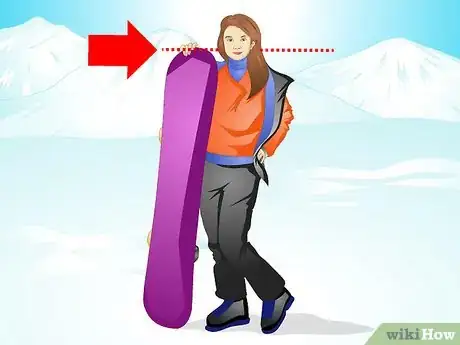
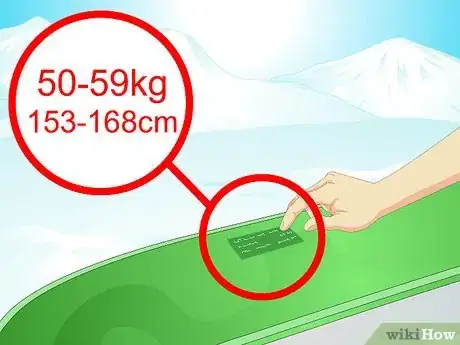
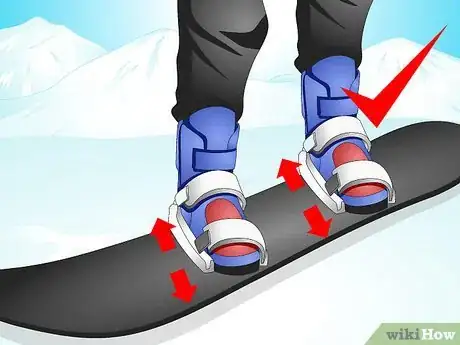
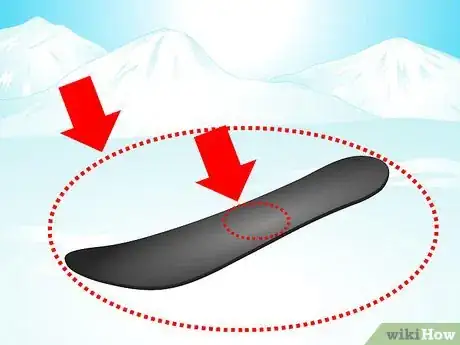
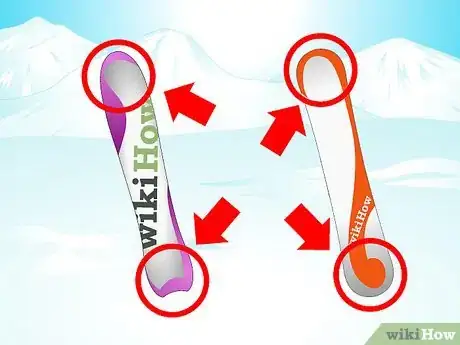
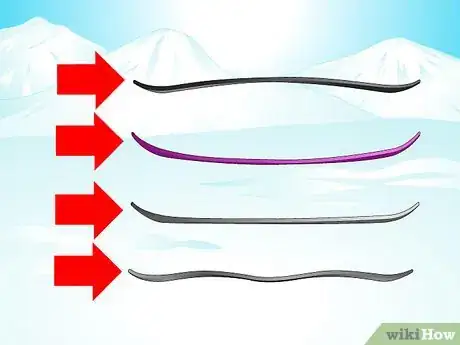
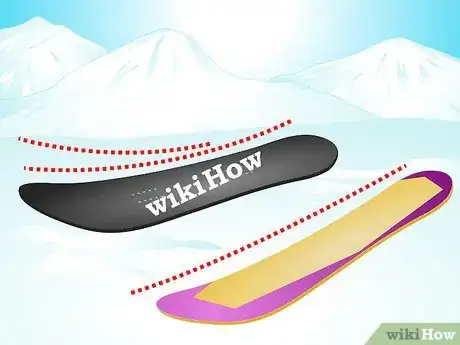

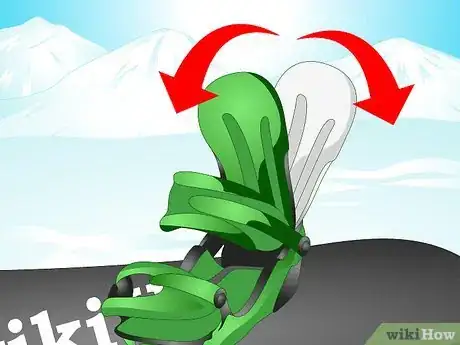
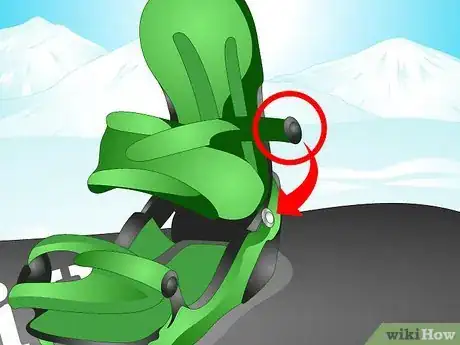
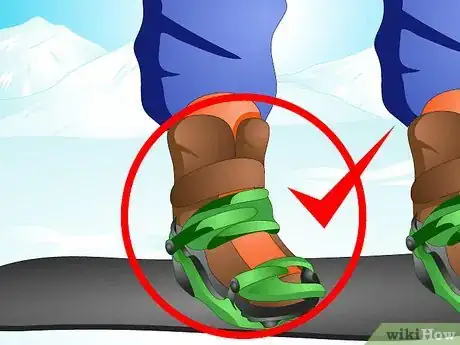
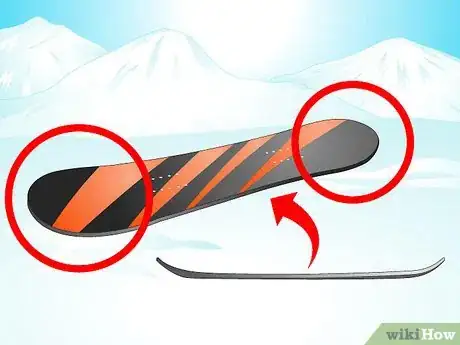


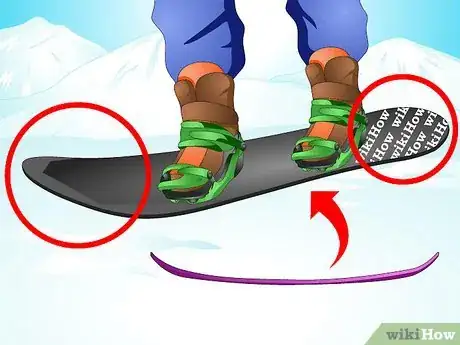
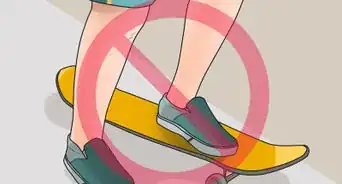
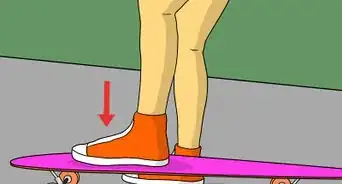
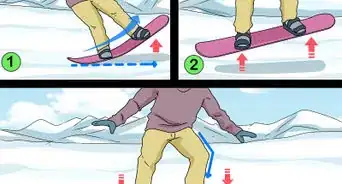
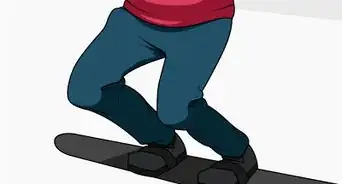
-Step-9.webp)







